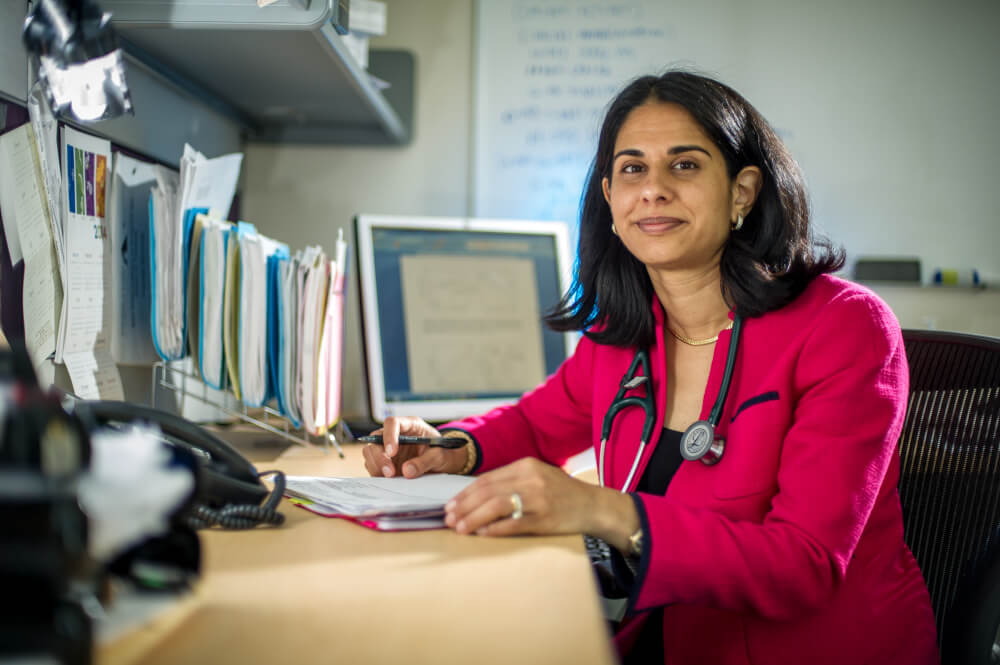Clinical trials are research studies that test new therapies or existing treatments to better understand their safety and efficacy. Every treatment that is now approved by the U.S. Food and Drug Administration (FDA) was tested in a clinical trial involving patients who volunteer, usually after a discussion with their physician.
The clinical trial system is used to evaluate treatments for all types and stages of breast cancer. Often, clinical trials are the best option to treat breast cancer. People who participate in clinical trials may be be some of the first to get a treatment before it is widely available to the public.
“I like to tell patients that a trial can be considered at any point in the disease course – whether they have early stage or metastatic disease,” says Sara Tolaney, MD, MPH, chief of the Division of Breast Oncology in the Susan F. Smith Center for Women’s Cancers at Dana-Farber.
What are the types of clinical trials for breast cancer?
Clinical trials are carried out in three phases:
- Phase 1 trials are the first to evaluate a drug in humans. A small number of patients — usually around 20 to 100 — are given the drug, first in very low doses and then escalating to find the dose of the treatment that can be given safely without causing severe side effects.
- Phase 2 trials enroll as many as several hundred patients to see if the treatment works in certain types of cancer. Researchers look for benefits, such as the cancer shrinking or prolonging the period of time when the cancer doesn’t progress or come back, or if the new treatment helps people live longer than most people do without the treatment.
- Because doctors do not yet know which treatment is better, participants in a Phase 3 trial are often randomized (assigned randomly) to receive either the standard treatment or the new treatment. This phase may involve hundreds of patients at many treatment centers. When possible, neither the doctor nor the patient knows which of the treatments the patient is getting. This type of study is called a double-blind study. If a new drug or treatment demonstrates better efficacy or safety than the current treatment, an application is submitted to the FDA for approval. Following a review of the data, the FDA decides whether to approve the treatment for wide use. This treatment often then becomes the standard treatment.

How do I know if a breast cancer clinical trial is right for me?
Whether a clinical trial is right for you is best discussed with your physician, who should carefully explain what the new treatment is and the pluses and minuses of enrolling in the clinical trial. This is required in all trials so that a patient who volunteers is giving “informed consent” to participate.
The benefits of participating in a clinical trial are not only that you may receive a more effective or less toxic treatment, but also that you are helping scientists and physicians improve therapies for breast cancer. Unfortunately, significant barriers exist among women from lower socioeconomic and ethnic marginalized minority groups that can prevent them from participating in clinical trials.
“Many patients living in communities where local hospitals don’t have clinical trials available to them, or and sometimes physicians may not be aware of what trials are available at other locations,” says Tolaney.
Other barriers include the fear among many patients that they are going to be used as a guinea pig, or that they may be given an inactive placebo. Dispelling that concern, Tolaney says, “we would never be giving them no therapy if they have metastatic disease” — they would receive the best standard therapy or the treatment that is being tested, she explains.
Dana-Farber offers breast cancer patients access to more than 60 therapeutic clinical trials at any one time.
